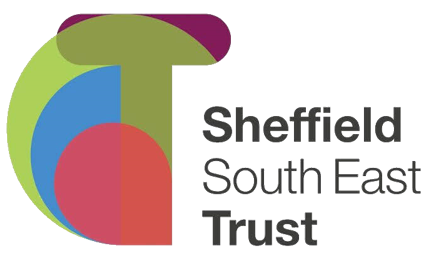Reading at Gleadless
At Gleadless, we believe that reading is one of the most important things a child will learn. It is integral to their understanding of themselves and the world as well as their ability to access the wider curriculum in school. Our pupils learn to identify as readers, with the ability, confidence and desire to read for their own enjoyment and as a means to learn.
Our reading curriculum is delivered through the teaching of systemic synthetic phonics, Reading lessons, story time and multiple opportunities for exploring and enjoying books.
Follow the link to find out more about the texts we read in our English curriculum.
Early Reading and Phonics
At Gleadless, we are passionate about ensuring all children become confident and enthusiastic readers and writers. From the moment that children walk in the doors in the Foundation Stage, reading is prioritised.
Phonics
Phonics is a method of teaching reading and writing by connecting sounds (phonemes) to letters (graphemes). At Gleadless, we follow the Little Wandle Letters and Sounds programme, which provides the foundations of learning to make the development into fluent reading and writing easier. The programme of study begins in the Foundation Stage 1 (FS1) with teaching children to listen carefully. Children will take part in nursery rhyme activities, phonological awareness and oral blending games. In Foundation Stage 2 (FS2) the children go one to learn a simple alphabetic code followed by a more complex code. Across FS and Key Stage 1, lessons are delivered daily with additional sessions for children who are not making the expected progress. In FS, there is further learning through continuous provision. This ensures that children learn to read fluently and at speed so they can focus on developing their skills in comprehension, vocabulary and spelling.
Reading Lessons in Foundation Stage and Key Stage 1
Children apply what they have learned in Phonics in Reading lessons. Using accessible texts that correspond to the children’s phonics attainment level, teachers have the opportunity to hear children read and discuss their books every week. All reading books progress cumulatively, matched to the sounds children are learning and already know.
Fluency, reading with automaticity and expression, is a core focus in Reading sessions, and children are given regular opportunities to read aloud to each other and their teachers. Dialogue in a small group, facilitated and supported by the teacher, is essential to developing children's comprehension and their enjoyment of lessons, as they learn how to interpret texts and construct their understanding through talk. These sessions take place throughout FS and KS1 and continue until the children have completed the phonics scheme.
Reading Lessons
As the children move off the phonics scheme at the end of KS1, teachers plan and deliver reading lessons based on a range of high-quality texts, including fiction (classic and modern, picture books and novels), poetry, and non-fiction.
Fluency is explicitly taught in a dedicated session once a week – but opportunities for reading aloud and practising fluency happen more often than this. Comprehension is recognised as an outcome based on a range of skills, including activating and using background knowledge, generating and asking questions, making predictions, visualising, monitoring comprehension, and summarising. These skills are taught holistically through discussion and exploration, with an additional session a week to focus on recording comprehension through writing.
Independent Reading
At Gleadless, we try to foster a love of reading. Children have a timetabled opportunity at least once a week to read a text of their choice. Teachers engage with students to help them access texts and cultivate their interest in reading. They use their knowledge of pupils and books to provide texts that tempt. Book corners are attractive and accessible. There are around 50 books in the book corner at a given time and teachers are familiar with all of them so they can help pupils choose books that appeal to their interests. This can include magazines and comics.
Teachers provide regular opportunities for children to talk about books and recommend their favourite texts to each other. In addition to the scheduled weekly slot, teachers seize every moment they can to read a picture book or promote a book that they are introducing to the book corner. Teachers read aloud to their class daily in all year groups. From KS1, teachers are reading chapter books and novels, but picture books and poetry are also regularly shared with classes all the way up to Y6.
Writing
At Gleadless, we see reading and writing as part of a cohesive English curriculum. Core texts are used as stimuli and models in the writing curriculum. ‘Immersion’ in these books is part of the writing curriculum, and involves discussion of content and analysis of language.
Reading at home
In FS and KS1, two reading books are sent home every week. One of these is a phonics phase book, at an ‘instructional’ level for the individual child (-children should be able to read 96% of the words on the page with relative fluency). The other book should be chosen by the child and can be a book that will be read to them by an adult or carer.
In KS2, children who have finished the phonics scheme are given the opportunity to choose a new reading book, every week or as and when they need to change their book. Children are given more freedom to choose their texts but they are supported by the teacher in helping select books that are an appropriate level for their independent reading and that they might enjoy. Children are also welcome to choose books from our library to read with adults at home.
We recommend that parents read with their child at least four times a week and we advocate that children read in some form everyday.






